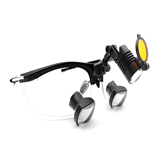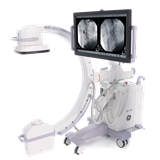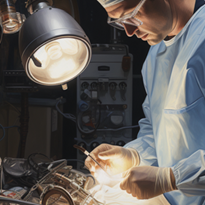Surgical light components play a vital role in our daily lives, providing illumination and enhancing the aesthetics of our surroundings. However, like any other surface, surgical light components can accumulate dust, dirt, and potentially harmful microorganisms over time. In this article, we will explore the importance of cleaning and disinfecting surgical light components, along with best practices, step-by-step guides, and maintenance tips to ensure their optimal performance and longevity.
Understanding surgical light Components
What Are Surgical Light Components?
Surgical light components refer to the various elements that make up surgical lighting fixtures, including bulbs, lampshades, switches, and wiring. These components work together to provide illumination in homes, offices, and public spaces.
Importance of Cleaning and Disinfecting Surgical Light Components
Regular cleaning and disinfection of surgical light components are crucial for several reasons. Firstly, dust and dirt accumulation on surgical light bulbs and lampshades can reduce the amount of surgical light emitted, resulting in dimmer surgical lighting conditions. Secondly, microorganisms such as bacteria and viruses can thrive on these surfaces, posing a potential health risk. By maintaining clean and disinfected surgical light components, we can ensure better surgical lighting quality and promote a healthier environment.
Cleaning Surgical Light Components
Best Practices for Cleaning Surgical Light Components
To effectively clean surgical light components, follow these best practices:
- Turn off the power: Before cleaning any surgical light component, make sure to turn off the power supply to avoid electrical accidents.
- Dust removal: Use a soft microfiber cloth or a feather duster to gently remove dust from the surface of the surgical light components.
- Cleaning solution: Prepare a mild cleaning solution by mixing warm water and a small amount of gentle dish soap.
- Cleaning process: Dip the cloth or sponge into the cleaning solution and wring out any excess moisture. Wipe the surgical light components, paying attention to areas with visible dirt or stains.
- Dry thoroughly: After cleaning, ensure that the surgical light components are completely dry before turning the power back on. Moisture can cause damage and pose electrical hazards.
Tools and Materials Needed for Cleaning
- Soft microfiber cloth or feather duster
- Mild dish soap
- Warm water
- Sponge or non-abrasive cleaning cloth
- Ladder or step stool (if needed for reaching high fixtures)
Step-by-Step Guide to Cleaning Surgical Light Components
- Turn off the power supply to the surgical light fixture.
- Remove any lampshades or covers from the surgical light components.
- Gently dust the surfaces of the surgical light components using a soft microfiber cloth or feather duster.
- Prepare a cleaning solution by mixing warm water and a small amount of gentle dish soap.
- Dip a sponge or non-abrasive cleaning cloth into the cleaning solution and wring out excess moisture.
- Wipe the surgical light components, including bulbs, lampshades, switches, and other surfaces, using the damp cloth.
- Pay special attention to areas with visible dirt or stains. For stubborn stains, a surgical lightly more concentrated cleaning solution can be used.
- Once all the surfaces have been cleaned, rinse the cloth or sponge and wipe the components again with clean water to remove any soap residue.
- Allow the surgical light components to air dry completely before reassembling and turning on the power supply.
Disinfecting surgical Light Components
Importance of Disinfecting Surgical Light Components
While cleaning removes visible dirt and dust, disinfecting surgical light components helps eliminate harmful microorganisms that may be present on the surfaces. This is especially important in shared spaces, such as offices and public facilities, where the risk of bacterial or viral transmission is higher.
Types of Disinfectants for Surgical Light Components
When selecting a disinfectant for surgical light components, consider the following options:
- Isopropyl alcohol: Isopropyl alcohol with a concentration of 70% or higher is effective in killing many types of bacteria and viruses.
- Hydrogen peroxide: Hydrogen peroxide can be used as a disinfectant by applying it to a cloth or spray bottle and wiping the surfaces of surgical light components.
- Disinfectant wipes: Pre-moistened disinfectant wipes are convenient for quick and easy disinfection.
Step-by-Step Guide to Disinfecting Surgical Light Components
-
Turn off the power supply to the surgical light fixture.
- Put on gloves and other appropriate personal protective equipment (PPE) before handling disinfectants.
- Remove any lampshades or covers from the surgical light components.
- Read the instructions on the chosen disinfectant product and follow them carefully.
- Apply the disinfectant to a cloth or spray it directly onto the surfaces of the surgical light components, ensuring thorough coverage.
- Allow the disinfectant to sit on the surfaces for the recommended contact time specified on the product label.
- Use a clean cloth or paper towel to wipe away the disinfectant after the contact time has elapsed.
- For hard-to-reach areas, such as bulb bases or intricate fixtures, use cotton swabs or small brushes soaked in disinfectant to ensure proper disinfection.
- Allow the surgical light components to air dry completely before reassembling and turning on the power supply.
Maintenance and Care for Surgical Light Components
Regular Inspections
Perform regular inspections of surgical light components to identify any issues or signs of wear. This includes checking for loose connections, damaged wiring, or flickering bulbs. Address any problems promptly to ensure the safe and efficient operation of the surgical lighting fixtures.
Replacing Faulty surgical Light Components
If you notice any surgical light components that are not functioning properly or are damaged beyond repair, it is important to replace them. Faulty components can lead to reduced surgical lighting quality, electrical hazards, or even fire risks.
Preventive Measures for Prolonged Lifespan
To extend the lifespan of surgical light components, consider the following preventive measures:
- Avoid touching surgical light bulbs with bare hands as the oils from your skin can shorten their lifespan. Use gloves or a clean cloth when handling bulbs.
- Use the appropriate wattage of bulbs recommended for the fixtures to prevent overheating and potential damage.
- Clean and dust surgical light components regularly to prevent dust buildup that can reduce illumination.
- Ensure proper ventilation around surgical light fixtures to prevent overheating.
Safety Precautions
Electrical Safety
When working with surgical light components, it is essential to follow electrical safety guidelines:
- Always turn off the power supply to the surgical light fixture before cleaning, disinfecting, or performing any maintenance tasks.
- Do not touch electrical connections or wiring without proper training or knowledge.
- If you notice any exposed wires, sparking, or other electrical issues, contact a qualified electrician for assistance.
In conclusion, cleaning and disinfecting surgical light components is crucial for maintaining optimal performance and promoting a healthy environment. Regular cleaning practices, such as dust removal and using mild cleaning solutions, help to keep the components in good condition. Disinfecting surfaces with appropriate disinfectants, like isopropyl alcohol or hydrogen peroxide, helps eliminate harmful microorganisms. Proper maintenance, including inspections and replacing faulty components, ensures the safe and efficient operation of surgical lighting fixtures. By following these cleaning, disinfecting, and maintenance guidelines, the lifespan of surgical light components can be extended, and their performance can be optimized for a safer and more hygienic environment.






-160x160-state_article-rel-cat.png)











%20(1)-160x160-state_article-rel-cat.png)








